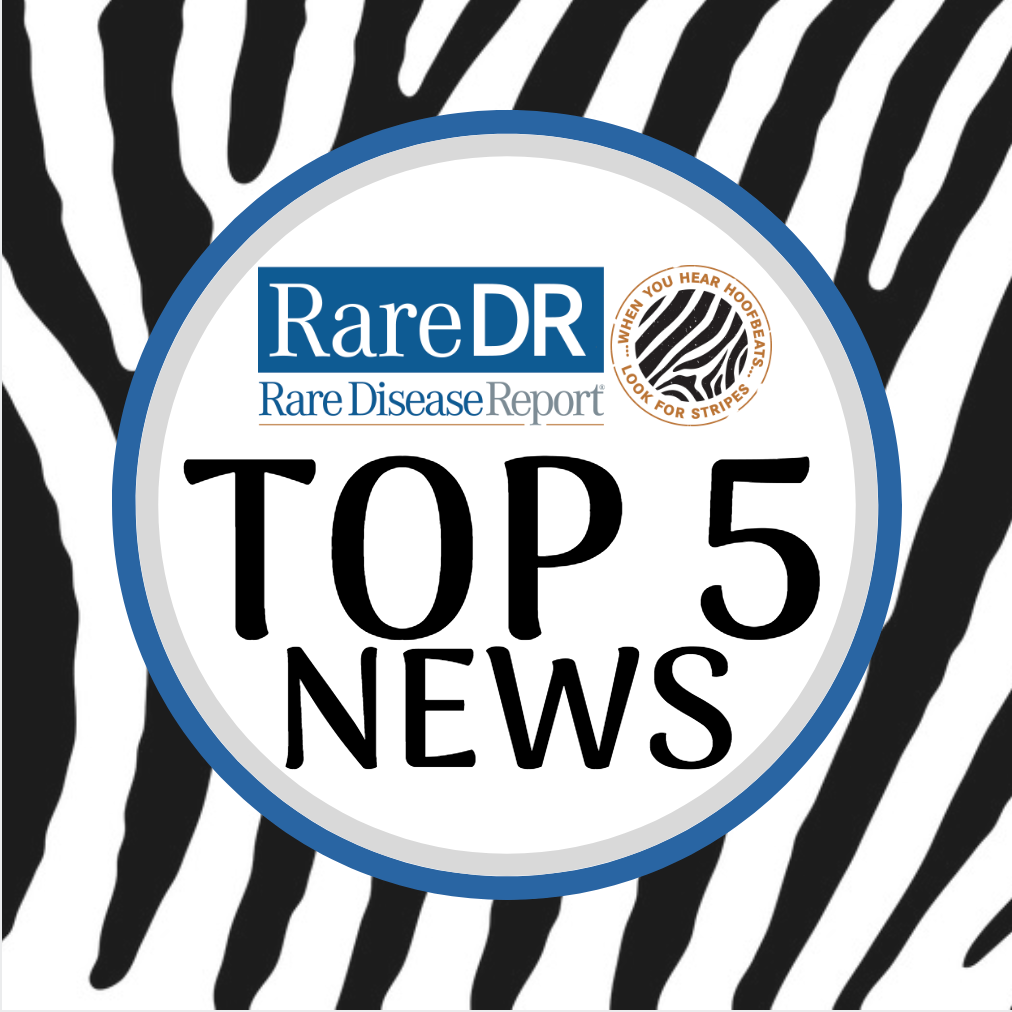Top 5 Rare Disease News of the Week—July 15, 2018
Stay up-to-date on the latest rare disease news by reading the top 5 articles of the week.

#5 Blood Test May Predict Tumor Metastasis in Head and Neck Cancers
According to the National Institutes of Health’s (NIH) National Cancer Institute, head and neck cancers make up about 4% of all cancer cases in the United States. Individuals who have been diagnosed with head or neck cancer are at greater risk of developing secondary cancer, such as in the esophagus or lungs, and the chance is higher for those who consume tobacco or alcohol products.
Just who is at risk for developing secondary cancers, or distant metastasis, has been the focus of researchers from Australia’s Queensland University of Technology. In a recent study published in the journal Nature Scientific Reports, the researchers say they’ve found that a simple liquid biopsy using blood samples may help predict which head and neck cancer cases may spread. In a study of 60 patients with head and neck cancers, the research team examined blood samples containing clusters of circulating tumor cells (CTCs) — which are shed from primary or secondary tumors and then circulate in patients’ blood – using a device developed by the team to separate single CTCs and CTC clusters from the blood of cancer patients.
#4 Study to Assess Safety & Efficacy of Cannabidiol in Children with Fragile X Syndrome
Read more about the study evaluating blood tests as a predictor for head and neck cancers.A genetic condition that typically affects males more than females, fragile X syndrome (FXS) is a rare disease caused by damage to the FMR1 gene located on the X chromosome, which, in turn, fails to produce the protein it typically makes. The rare disease is characterized by a host of neurological deficits, such as seizures, along with developmental, intellectual, and social disabilities.
Currently, there is no specific treatment for the disease; as such, management of the condition is usually more supportive rather than curative. However, now, a new pivotal clinical trial aims to evaluate the safety and efficacy of a cannabidiol (CBD) gel developed by Zynerba Pharmaceuticals to treat the debilitating behaviors associated with the disease.
#3 Title: Phase 3 Trial Targets Rare Form of Pediatric Epilepsy with No Approved Therapies
Read more about the CBD gel, ZYN002, for the treatment of fragile X syndrome.Characterized by seizures that often begin in infancy, followed by significant developmental delays, CDKL5 deficiency disorder (CDD) is a rare, genetic condition first identified in 2004. Although it is known to be caused by mutations in the CDKL5gene, found on the X-chromosome, the cause of the mutation remains unknown, making it that much more difficult to develop effective treatment. Although the true incidence of CDKl5 deficiency disorder is unknown, more children are diagnosed with the condition as awareness spreads. To date, there are no specific therapies available to those with the disorder, and anti-epilepsy medications that are available are not very effective; this leaves a large unmet medical need. However, another treatment option is set to be further explored in a pivotal phase 3 trial in children and young adults.
The treatment in question? Oral ganaxolone, developed by Marinus Pharmaceuticals, Inc.
#2 Amyotrophic Lateral Sclerosis: Exploring the Current & Future Treatment Landscape
Read more about the phase 3 trial of Oral ganaxolone for the treatment of CDD.Estimated to affect 5 in 100,000, the neurodegenerative disease, amyotrophic lateral sclerosis (ALS), is known to lead to severe disability and eventual death from ventilatory failure. Despite advances made in the fight against the disease, there is no diagnostic test available to detect it, the 2 available medications to treat it provide modest benefit, and the pathogenesis of it remains incompletely understood.
In order to improve quality of life and prolong survival in patients with AML, a better understanding of the pathological mechanisms associated with the disease, and thus, new treatment options are imperative, according to a new analysis by researchers at the Mayo Clinic, in Jacksonville, Florida.
#1 Developing Personalized CRISPR-Cas9 Genome Editing Therapy for Pompe Disease
Read more about the analysis on ALS’s epidemiology, the standard care practice, FDA approved therapies, and potential future therapies. In light of the recent statement made by US Food and Drug Administration (FDA)’s Commissioner, Scott Gottlieb, MD, regarding the new guidance documents for gene therapy development, the rare disease community is buzzing. Researchers working with rare diseases that have genetic origins are increasingly turning to the use of these therapies as potential treatment options. With over 7,000 rare diseases existing and more being detected every year, the growing need for effective treatment options is underscored.
In a laboratory at Children's Hospital of Orange County (CHOC) Children’s Research Institute, researchers are working on developing personalized CRISPR-Cas9 genome editing therapeutics for rare diseases, with a specific focus on the progressive cardiac and skeletal myopathy lysosomal storage disorder (LSD), Pompe disease. Research scientist, Jeffrey Huang, PhD, is helping lead the way.
Aside from evaluating the safety and efficacy of the CRISPR genome editing, Dr Huang also hopes to accomplish the following with his research project: generate animal models of Pompe disease that bear mutations homologous to those that cause human Pompe disease, fully assess and validate the animal models generated to ensure molecular, biochemical, histopathological and functional analogy to human Pompe disease, and develop CRISPR genome editing/delivery systems that would correct mutations in validated models of Pompe disease.
Furthermore, Dr Huang feels confident that he can prove CRISPR genome editing is superior to recombinant GAA enzyme (rhGAA) replacement therapy.
Read more about the CRISPR-Cas9 genome editing technology happening in Pompe disease.